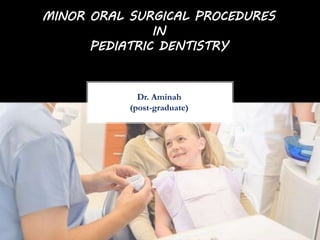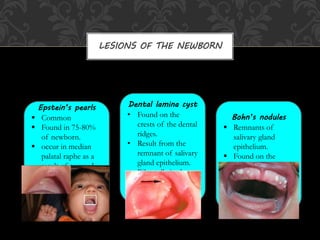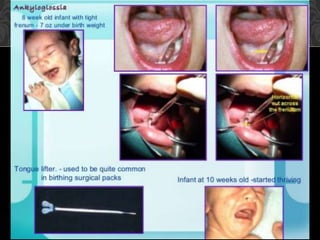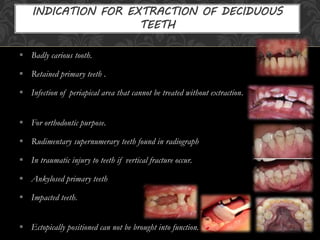In “Surgical Procedures in Pediatric Dentistry: Enhancing Oral Health,” you will discover the vital role that pediatric dentistry plays in promoting dental health for children. From birth through adolescence, pediatric dentists provide specialized care and serve as a valuable resource for parents. By emphasizing the importance of early dental visits, these professionals can detect and treat tooth decay in its early stages, ensuring optimal oral health. With their extensive training and expertise, pediatric dentists are equipped to diagnose and treat oral diseases, monitor dental development, perform surgical procedures, and provide emergency care. This article will also shed light on the promising career outlook for pediatric dentists, with a projected 20% growth in job demand from 2014 to 2024.
Overview of Pediatric Dentistry
Definition of pediatric dentistry
Pediatric dentistry is a specialized branch of dentistry that focuses on providing dental care to children from birth through adolescence. It is a crucial aspect of healthcare for children, as their dental needs differ from those of adults. Pediatric dentists are specially trained to address these unique needs and ensure the oral health and well-being of children.
Role of pediatric dentists
Pediatric dentists play a vital role in promoting dental health in children. They serve as a resource for parents, providing guidance and education on proper oral hygiene practices, diet, and habits that can impact dental health. They also diagnose and treat oral diseases, monitor dental development, perform surgical procedures, and provide emergency dental care. By providing comprehensive dental care tailored specifically for children, pediatric dentists contribute to the overall health and well-being of children.
Recommended first dental visit
It is recommended that children have their first dental visit after the presence of their first tooth or by their first birthday. This early dental visit is essential for several reasons. Firstly, it allows the pediatric dentist to examine the child’s oral health and assess any potential risks or issues. Early oral examination is crucial for detecting tooth decay in its early stages and preventing further complications. Additionally, it provides an opportunity for the child and their parents to establish a positive relationship with the dentist and familiarize themselves with the dental office environment. This early introduction to dental care sets the foundation for a lifetime of proper oral health habits.
Importance of Surgical Procedures in Pediatric Dentistry
Early detection and treatment of oral diseases
Surgical procedures in pediatric dentistry are critical for the early detection and treatment of oral diseases in children. Children are particularly susceptible to tooth decay and cavities due to their developing teeth and lack of proper oral hygiene habits. Surgical procedures such as tooth extractions and dental restorations allow pediatric dentists to remove decayed or damaged teeth and restore oral health. By addressing these issues early on, pediatric dentists can prevent further complications and ensure the long-term oral health of children.
Enhancing oral health outcomes
Surgical procedures in pediatric dentistry also play a crucial role in enhancing oral health outcomes for children. By addressing dental issues promptly and effectively, pediatric dentists can prevent the development of more severe conditions or complications. For example, orthodontic procedures can correct misaligned teeth, improving oral function and preventing potential speech or chewing difficulties. By intervening early, pediatric dentists can contribute to better oral health outcomes and overall well-being in children.
Addressing dental developmental issues
Another important aspect of surgical procedures in pediatric dentistry is addressing dental developmental issues. Children’s teeth and jaws are constantly growing and changing, and sometimes abnormal dental development can occur. Surgical interventions such as oral and maxillofacial surgery can correct these developmental issues, ensuring proper alignment and function of the teeth and jaws. By addressing these concerns early on, pediatric dentists can guide proper dental development and prevent potential orthodontic or functional problems in the future.

Training and Qualification of Pediatric Dentists
Completion of dental school
Pediatric dentists undergo extensive training and education to qualify for their profession. It starts with completing a four-year dental school program, where they acquire the foundational knowledge and skills necessary to practice general dentistry. During this period, they learn about oral anatomy, dental diseases, preventive measures, and basic dental procedures applicable to patients of all ages.
Postgraduate residency program
After completing dental school, aspiring pediatric dentists must pursue additional training through a postgraduate residency program. This program typically lasts for two to three years and focuses specifically on pediatric dentistry. During this residency, dentists receive specialized training and gain hands-on experience in treating children’s dental needs. They work under the guidance of experienced pediatric dentists, learning advanced techniques, and developing the skills necessary to provide comprehensive dental care for children.
Specialized training in surgical procedures
As part of their postgraduate residency, pediatric dentists also receive specialized training in surgical procedures relevant to pediatric dentistry. This training equips them with the knowledge and skills needed to perform common surgical procedures such as tooth extractions, restorations, oral and maxillofacial surgery, and orthodontic procedures. The specialized training ensures that pediatric dentists can address the unique surgical needs of children effectively and safely.
Common Surgical Procedures in Pediatric Dentistry
Tooth extractions
Tooth extractions are a relatively common surgical procedure in pediatric dentistry. They may be necessary when a tooth is severely decayed, damaged beyond repair, or causing orthodontic problems. Pediatric dentists use various methods and techniques to safely remove the tooth, considering the child’s age, tooth location, and any associated factors. Post-extraction care and considerations are also essential to promote proper healing and prevent complications.
Dental restorations
Dental restorations involve repairing or replacing damaged or decayed teeth in children. Pediatric dentists use different types of dental restorations, such as dental fillings, crowns, or even dental implants, depending on the extent of the damage. The procedure for dental restorations typically involves removing the decayed or damaged portion of the tooth and restoring its function and appearance. The materials used in pediatric dental restorations are safe and durable, ensuring long-term outcomes.
Oral and maxillofacial surgery
Oral and maxillofacial surgery encompasses a range of surgical procedures related to the mouth, jaws, and facial structures. In pediatric dentistry, these procedures may be necessary to address irregularities in jaw growth, correct cleft lip and palate, remove impacted teeth, or treat oral pathologies. Pediatric dentists work closely with oral and maxillofacial surgeons to provide comprehensive care and ensure optimal outcomes for children requiring these surgical interventions.
Treatment of dental trauma
Dental trauma refers to injuries or damage to the teeth, gums, or surrounding oral structures. Children are at a higher risk of dental trauma due to their active lifestyles and propensity for accidents. Pediatric dentists are trained to provide emergency management and stabilization for dental trauma cases, addressing immediate concerns and preventing further damage. Depending on the severity of the trauma, restorative options such as dental crowns, bridges, or dental implants may be recommended to restore the appearance and function of damaged teeth.
Orthodontic procedures
Orthodontic procedures involve the correction of misaligned teeth or jaws. Pediatric dentists play a crucial role in evaluating children for orthodontic treatment and identifying issues that may require intervention. Common orthodontic appliances used in pediatric dentistry include braces, retainers, and space maintainers. The orthodontic treatment process typically involves a series of adjustments and monitoring to ensure the desired outcome is achieved. Pediatric dentists work closely with orthodontists to provide comprehensive orthodontic care tailored to the specific needs of children.

Tooth Extractions in Pediatric Dentistry
Reasons for tooth extractions
Tooth extractions in pediatric dentistry may be necessary for various reasons. Some common reasons include severe tooth decay that cannot be restored, overcrowding of teeth, impacted teeth, or trauma resulting in irreparable damage. Pediatric dentists carefully evaluate each case to determine the need for a tooth extraction, taking into account the child’s overall oral health and future dental development.
Types of tooth extractions
There are two main types of tooth extractions: simple and surgical. Simple extractions are performed on visible teeth that have erupted fully and can be easily accessed. Surgical extractions, on the other hand, are more complex and involve teeth that are partially or fully impacted, broken below the gumline, or need to be extracted for orthodontic reasons. Pediatric dentists have the expertise to perform both types of extractions, ensuring the safety and comfort of the child throughout the procedure.
Methods and techniques used
Pediatric dentists employ various methods and techniques to perform tooth extractions in children. Local anesthesia is typically used to numb the area around the tooth, ensuring a pain-free procedure. Depending on the child’s age and cooperation, additional sedation techniques such as nitrous oxide or conscious sedation may be employed to alleviate anxiety and discomfort. The extraction itself involves gently loosening the tooth from its socket using specialized instruments and then removing it with minimal trauma to the surrounding tissues.
Post-extraction care and considerations
Post-extraction care is essential for promoting proper healing and preventing complications. Pediatric dentists provide detailed instructions to parents and caregivers on how to care for the extraction site, including the use of pain medication, cold compresses, and avoiding certain foods or activities that may impede healing. Regular follow-up appointments are also scheduled to monitor the healing process and address any concerns. Restoration options for missing teeth may be discussed if necessary, ensuring the child’s ongoing oral health and function.
Dental Restorations in Pediatric Dentistry
Types of dental restorations
Pediatric dentistry offers various options for dental restorations in children. The choice of restoration depends on the extent of the damage and the child’s specific needs. Dental fillings are commonly used to restore decayed or damaged teeth, usually with tooth-colored composite resin materials for aesthetic purposes. Dental crowns may be recommended for more extensive damage or to protect a weakened tooth. Dental implants are also available for children who have lost a permanent tooth due to trauma or other reasons.
Procedure for dental restorations
The procedure for dental restorations in pediatric dentistry typically involves multiple steps. First, the decayed or damaged portion of the tooth is removed under local anesthesia to ensure comfort. The tooth is then prepared for the restoration, which may involve shaping and cleaning the tooth structure. The chosen restoration material is applied, shaped, and hardened to restore the tooth’s function and appearance. Pediatric dentists carefully adjust the restoration to ensure proper fit and bite alignment.
Materials used in pediatric dental restorations
Pediatric dental restorations utilize materials that are safe, durable, and aesthetically pleasing. Composite resin is commonly used for dental fillings due to its ability to match the natural color of the tooth. Dental crowns can be made from stainless steel or tooth-colored materials such as zirconia or resin. These materials provide durability and strength while maintaining a natural appearance. Dental implants used in pediatric dentistry are specifically designed for children, taking into account their growth and development.
Long-term outcomes and considerations
Pediatric dental restorations aim to restore the function and appearance of damaged teeth while ensuring long-term oral health outcomes. With proper oral hygiene practices and regular dental check-ups, dental restorations can last for many years, supporting the child’s oral health and overall well-being. Pediatric dentists provide guidance to parents and caregivers on how to care for dental restorations, including proper oral hygiene techniques, dietary considerations, and regular maintenance to prolong the life of the restoration.

Oral and Maxillofacial Surgery in Pediatric Dentistry
Common procedures in oral and maxillofacial surgery
Oral and maxillofacial surgery encompasses a wide range of procedures that address issues related to the mouth, jaws, and facial structures. In pediatric dentistry, common oral and maxillofacial surgery procedures include the extraction of impacted teeth, correction of jaw alignment, treatment of oral pathologies, removal of cysts or tumors, and the repair of cleft lip and palate. Pediatric dentists work closely with oral and maxillofacial surgeons to deliver comprehensive surgical care tailored to the specific needs of children.
Conscious sedation and general anesthesia
Oral and maxillofacial surgery in pediatric dentistry may require the use of conscious sedation or general anesthesia to ensure the comfort and safety of the child. Conscious sedation involves the administration of medication to induce a state of minimal discomfort and relaxation while allowing the child to remain conscious and responsive. For more complex procedures or cases requiring extensive dental work, general anesthesia may be employed to ensure complete unconsciousness and pain control. Pediatric dentists carefully evaluate each case and determine the most appropriate sedation or anesthesia technique based on the child’s age, overall health, and the nature of the procedure.
Risks and complications
As with any surgical procedure, oral and maxillofacial surgery in pediatric dentistry carries potential risks and complications. Pediatric dentists and oral and maxillofacial surgeons undergo extensive training to minimize these risks and ensure the safety of the child. However, it is important for parents to be aware of possible complications such as infection, bleeding, damage to surrounding structures, or adverse reactions to anesthesia. Pediatric dentists thoroughly explain the potential risks and benefits of the procedure and address any concerns or questions parents may have.
Recovery and post-operative care
Pediatric dentists provide detailed instructions for post-operative care and recovery following oral and maxillofacial surgery. This typically includes information on pain management, the use of cold compresses, dietary restrictions, oral hygiene practices, and activity limitations. Regular follow-up appointments are scheduled to monitor the healing process and address any concerns or complications. Parents and caregivers play a crucial role in ensuring the child’s comfort and compliance with post-operative care measures, contributing to successful recovery and optimal outcomes.
Treatment of Dental Trauma in Pediatric Dentistry
Types of dental trauma in children
Dental trauma refers to injuries or damage to the teeth, gums, or surrounding oral structures. Children are at a higher risk of dental trauma due to their active lifestyles and propensity for accidents. Common types of dental trauma in children include tooth fractures, avulsion (complete displacement of a tooth), luxation (partial displacement of a tooth), and soft tissue injuries. Prompt and appropriate treatment of dental trauma is essential to prevent further damage or complications.
Emergency management and stabilization
When faced with dental trauma, immediate emergency management and stabilization are crucial. Pediatric dentists are trained to handle dental emergencies and provide timely interventions to minimize the impact of trauma. This may involve assessing oral and facial injuries, controlling bleeding, stabilizing displaced teeth, and managing pain or discomfort. Parents or caregivers should contact a pediatric dentist as soon as possible in the event of dental trauma, as prompt treatment can greatly impact the long-term outcome for the affected tooth or teeth.
Restorative options for damaged teeth
After the initial emergency management and stabilization, restorative options for damaged teeth are considered. Pediatric dentists assess the extent of the trauma and determine the most appropriate restorative treatment. Dental restorations such as dental crowns or veneers may be recommended to restore the appearance and function of fractured or chipped teeth. In cases of avulsion, where a tooth has been completely knocked out, immediate re-implantation or a dental implant may be considered. Restorative options aim to preserve the natural tooth whenever possible while ensuring optimal oral health outcomes.
Long-term effects and monitoring
Dental trauma in childhood can have long-term effects on the affected tooth or teeth. These may include pulp necrosis (death of the tooth’s inner tissue), root resorption (breakdown of the tooth’s roots), or changes in tooth color or shape. Pediatric dentists closely monitor the long-term effects of dental trauma through regular check-ups and X-rays. In some cases, additional interventions or treatments may be necessary to address any complications that arise over time. By closely monitoring the impact of dental trauma, pediatric dentists can preserve the affected tooth’s integrity and prevent further issues in the future.

Orthodontic Procedures in Pediatric Dentistry
Evaluation for orthodontic treatment
Orthodontic treatment in pediatric dentistry aims to correct misaligned teeth or jaws and achieve proper oral function and aesthetics. Evaluation for orthodontic treatment typically involves a comprehensive examination by a pediatric dentist or orthodontist. The evaluation includes assessing dental and facial structures, taking X-rays or scans, and analyzing dental impressions or models. The orthodontic evaluation determines the need for intervention, the appropriate timing for treatment, and the most suitable orthodontic appliances for the child.
Types of orthodontic appliances
Orthodontic appliances used in pediatric dentistry include braces, retainers, and space maintainers. Traditional braces consist of metal brackets and wires and are the most common orthodontic appliance. However, there are also other options available, such as ceramic or clear braces, which are less noticeable. Retainers may be used after the completion of orthodontic treatment to maintain the corrected alignment of the teeth. Space maintainers are used to preserve the space for permanent teeth when baby teeth are lost prematurely.
Orthodontic treatment process
The orthodontic treatment process in pediatric dentistry involves several stages. After the initial evaluation, a treatment plan is developed based on the child’s specific needs and the desired outcome. Orthodontic appliances are then fitted and adjusted over the course of treatment to gradually move the teeth into their correct positions. Regular follow-up appointments are scheduled to monitor progress, make necessary adjustments, and ensure the proper functioning of the appliances. The duration of orthodontic treatment varies depending on the complexity of the case and the child’s response to treatment.
Monitoring and follow-up care
Orthodontic treatment in pediatric dentistry requires ongoing monitoring and follow-up care to ensure optimal results. Pediatric dentists and orthodontists closely monitor the progress of treatment through regular check-ups and adjustments. It is important for parents and caregivers to ensure the child follows good oral hygiene practices, dietary restrictions if necessary, and any specific care instructions for their orthodontic appliances. By actively participating in the treatment process and adhering to the recommended follow-up care, children can achieve the desired orthodontic outcomes and maintain their oral health for years to come.
Conclusion
Surgical procedures play a crucial role in enhancing oral health in pediatric dentistry. They allow pediatric dentists to identify and address oral diseases at an early stage, preventing further complications and ensuring long-term oral health. Through specialized training and qualification, pediatric dentists are equipped with the knowledge and skills necessary to perform these surgical procedures safely and effectively. From tooth extractions and restorations to oral and maxillofacial surgery, the array of surgical interventions available in pediatric dentistry serves to address a wide range of dental needs in children. By understanding the importance and benefits of these surgical procedures, parents can confidently entrust their children’s oral health to the expertise of pediatric dentists.
